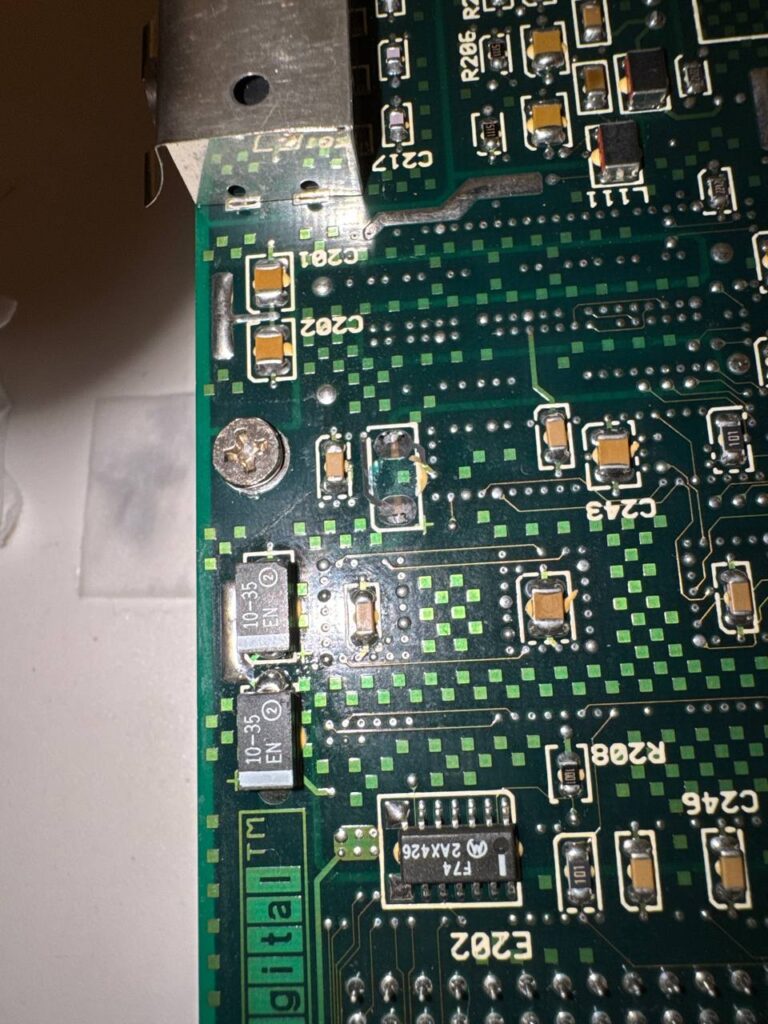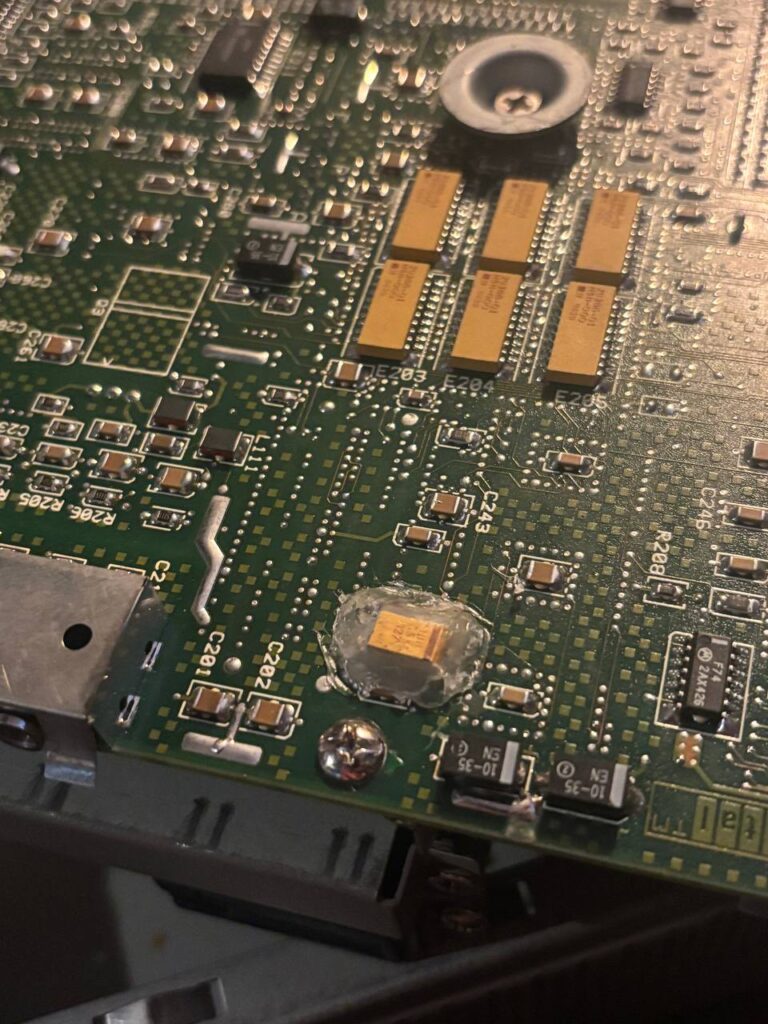The disassembly instructions found online (i.e. from here) only let you access the board. If you need to remove the board (i.e. inspect the rear or replace it), then there are some things to keep in mind:
- The D-sub nuts for serial/parallel/VGA hold the case together, as does the rear 3.5mm jack. The retention nut on it can be hard to remove.
- There are only three screws holding the board down on the corners.
- You likely don’t need to remove the heatsink except to replace thermal paste (which it uses despite using thermal pads everywhere else). It looks like it retains the board to the chassis, but it doesn’t; the standoffs the heatsink is screwed into just float and aren’t held to the chassis. I suspect it’s solely for avoiding PCB flex when screwing the heatsink on.
- If you unscrew both the heatsink and the board, the standoffs will fall out of place and float around in the chassis until you find them again. One thing at a time.
- Likely, you don’t need to remove the GPU heatsink (small black one). It doesn’t have any retention involved.
- You may not need to remove the PCI bracket, but you might find removing it helps.
- You don’t need to remove the PSU; the board lifts around it. Obviously, unplug the power connector.
- There’s an “EMI gasket” between the ethernet port and the chassis. Remove it temporarily; it can be reinstalled.
- There is electrical tape on the front and rear USB ports. Remove these and don’t bother reinstalling them.
- The board tilts upward from the front ports, then out. Friction is what keeps the board in mostly after removing the screws.


